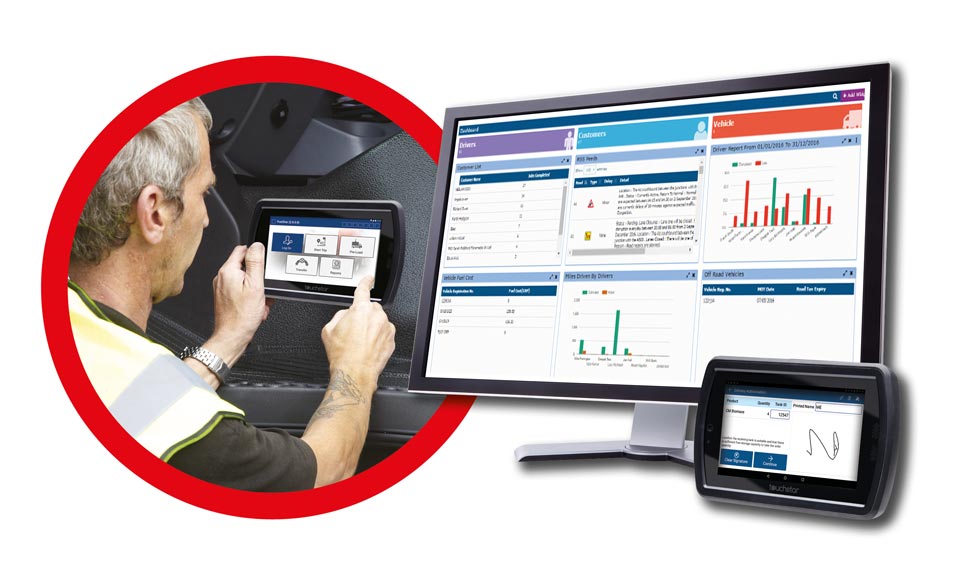
Constantly changing fuel prices and an increasingly competitive market are just two of the pain points currently facing the fuel logistics industry. As the economy and consumer demands continue to evolve coming out of the pandemic, experts are continually reassessing the market and looking for solutions.
Gordon Hyland, sales director of Touchstar Technologies — fuel logistics division, sat down with BPN to share his views on the future of fuel logistics, the role of digitization and Touchstar’s plans for the North American liquefied petroleum gas (LPG) market. Hyland has 25-plus years of experience supporting customers with complex, field-based technology solutions.
What major challenges are facing the fuel logistics industry at present?
The COVID-19 pandemic saw the logistics sector, and specifically fuel distribution, move into the spotlight as a ‘key’ industry. We were seen as an industry that helped people get through that difficult time. However, that hasn’t stopped us being hit by challenges since the world has gone back to normal. There are many hurdles faced by the fuel logistics sector that are similar to the wider logistics sector.
Business in all sectors is becoming more competitive, with more market entrants to arenas that once seemed closed off to them, so that is always a challenge for the major players. On top of that, businesses across all sectors have struggled to find and retain skilled staff. For anyone running a fleet of vehicles, the compliance and maintenance costs always seem to be on the rise.
The major challenges specific to this sector that I see are the instability of fuel prices and the ability to successfully differentiate your brand. Fuel price uncertainty obviously creates hesitancy with consumers and businesses, and they are potentially reducing order volumes and consumption. Of course, any rises in fuel prices also affect the vehicles delivering that fuel. This means the application of good controls across the fleet becomes all the more important in helping to retain margins and competitive differentiation.
A major part of developing and protecting your brand can be achieved through improving your customer communications, as well as the speed and reliability of delivery. These are key areas that have to be achieved consistently. With the right strategy, execution and appropriate deployment of technology, distributors can differentiate themselves, add value to their brand and increase efficiency.
Another challenge, and the largest overhead to a fuel distributor, is the cost of getting product from point of purchase, or storage, to the end customers. The European market has widely adopted a digital strategy that proves there are cost savings and efficiencies to be generated through fewer miles driven; accurate identification of tank storage locations; efficient routing and scheduling coupled with a real-time view of what happens in the field back at the planning office; and reconciliation of invoices and other issues, often happening the same day.
How does the European fuel logistics sector differ from North America?
The most obvious difference is the geography. European countries are smaller than the United States or Canada. This tends to result in areas of denser population, which creates differing requirements for fuel distribution networks.
What this has meant, though, is that the adoption of digitization of field-based processes has come quicker in Europe. Most large fleets now have in-cab mobile computing systems. Any that don’t are the rare exception. This is not yet the case in North America.
Digitization offers immediate legislative benefits by managing the data that a business needs to prove compliance with industry regulations.
It also brings practical operational benefits, such as instantly sending a driver a digital manifest in the morning, updating it in real-time if plans change, and not having to worry about lost, incomplete or damaged proof of deposit (POD) slips, without which a company won’t get paid.
Digitization means that drivers can capture a client e-signature on the glass of a connected handheld, along with the geo-coordinates of the driver at the time of delivery, for a complete POD. An invoice can then be generated within minutes of POD for improved cash flow.
How can advancements in the European sector address nuances in the North American fuel logistics market?
There are obvious differences between the U.S. and European markets, which have practical, operational consequences. In the U.S., there is a diverse network of LPG dealers, suppliers and retailers, leading to a segmented and competitive market. Consumers have a wide range of options for suppliers. In Europe, the distribution network may vary by country. Some countries have more fragmented markets with multiple suppliers, while others have a smaller number of national suppliers.
Equally there are differences in the regulatory framework. The U.S. has federal and state regulations, while Europe has a mix of national and European Union regulations.
To a degree, these differences are irrelevant. The modern digital technologies such as cellular communications, data capture interfaces and the tools for ensuring interoperability between systems are available to all solutions providers in theory. The needs of the European market were met through focusing on using the client base as a primary guide for addressing nuances. Often these nuances exist between individual organizations. It’s rare that any two of our LPG clients have identical working practices.
An ability to rapidly develop functionality means it doesn’t matter if the developments are at a macro (market or regulatory) level or client level, as long as the implementation is within an acceptable time frame and cost-effective. In this respect, it also doesn’t matter if the end client is American or European.
What is the sector’s future?
We believe that future is digital. The digitization of the sector needs to continue for distributors to remain competitive. Time and time again, digitization shows it can be the most efficient way to improve productivity.
One fear that people have is that digitization is a way to replace people — we don’t see it that way. Instead, digitization is a way to increase accuracy, agility and cost savings and make the people’s actions more cohesive. We turn unstructured, paper-based data into structured and actionable information, which enhances strategic capability.


